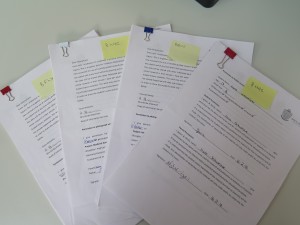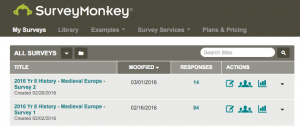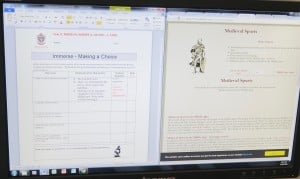Hello this is Alinda Sheerman – Lee Fitzgerald’s co-conspirator!
I am the only Teacher Librarian and Head of Information Services at Broughton Anglican College (Pre-K to Year 12 with 1000 students.) I have worked at Broughton for twelve years and have been collaboratively planning and teaching since 2008 when I began to promote Guided Inquiry as the research pedagogy for our school with the headmaster’s blessing.
I took part in Action Research in 2007 to investigate Guided Inquiry as a pedagogy and the results were shared with the staff. This was the same AIS Action Research grant that Lee and other NSW Teacher Librarians took up, and we collaborated as a group on a wiki to share our experiences and results – with Dr Ross Todd as our mentor!
Since then I have supported teachers through Guided Inquiry units of work every year with increasing interest from teachers in our Primary section. Some teachers need little assistance now and even support their ‘Grade Buddies’. Every year I find new teachers asking for assistance and they usually go on to repeat the experience. Nevertheless, my life is a bit crazy most of the time!
Lee and I thought it would be a good idea to have some TLs actually blog their way through a few Australian Curriculum Guided Inquiry experiences. I will take the first turn as we are part way through our Year 8 Medieval Europe unit of work. This is our third week and the four classes are at the Immerse stage with some students extending into Explore. Of course we have had the usual interruptions such as a swimming carnival but the unit of work is still on schedule.
Week 1: OPEN Stage
Students were given a letter informing parents of the work we were undertaking to obtain permission to share student work samples, images and video so that I can blog online about this unit of work. These have been collected from four classes – a ‘lolly bribe’ to the first class with all handed in worked well!
Before learning anything about Medieval Europe, I sent the students a survey link through each class Edmodo group. This survey was to collect data for action research into this unit. We taught the same unit last year using GI and have changed a few things after last year’s survey results so this is now the second spiral of action research. Another survey will be given at the beginning of ‘Identify’ and then a final for ‘Evaluate’. This survey included questions from the ‘SLIM toolkit’.
During the first week (Open Stage) we watched two ClickView videos to set the scene. The first was a general overview of the historical period and showed the influence of the Crusades in bringing change to feudal life. The second movie was a close up encounter with life in a small village with a focus on daily life, food, farm life etc. After seeing these movies with all four classes I now feel very knowledgeable indeed!
Scaffold ‘1. Open’ was a visual representation of the Steps of GID and we briefly talked our way through these emphasizing the affective domain as well. (The students had used Guided Inquiry to study Ancient China at the end of Year 7 so were familiar with this already.)
Week 2: IMMERSE Stage
Students downloaded the scaffolds from an Edmodo group folder so they were saved offline and organised in their files.
‘Step 2. Immerse Scaffold’ – Used for searching broadly and at shallow depth for information on the five areas of study set down by the curriculum.
Information literacy began with the first lesson as students were reminded about where and how to search for quick authoritative information from books in the library, physical encyclopedias, online encyclopedias, History Reference Centre subscription, LinksPlus for websites etc.
Dot points only were given at this stage as students sifted and selected what interested them in order to make a selection of topic area to study in depth.
The choice of topic area being made, we then asked them to form circles and defend their choice and speak about where they want to take their topic area in terms of its impact on local life and how aspects changed over Medieval times. The students really enjoyed this activity. Students also wrote a reflection in a shared Edmodo folder.
Week 3: EXPLORE Stage
By the end of week 3 a number of students in each class were beginning the Explore stage. From now on students will be working on different scaffolds so it is important that the whole class has instruction on specific Information literacy skills at point of need. I usually structure this at the beginning of lessons before students begin personal research.
The ‘Step 3. Explore’ Scaffold begins with asking students to create a mind map – what do you know and what do you want to find out? We use ‘bubbl.us’ and instruct students on the purpose of visually mapping out where they are going with their topic areas. The third depth bubble should be contributing questions about their selected aspect of the topic area.
At the start of this stage I conducted a lesson and activity on note-taking skills and referencing – as many of the notes made on this scaffold can be reused later in the Gather and Create Stages. Practice on making a Bibliography entry using an online generator was made for a site they had found on their topic.
So far… everyone is on task, apparently really enjoying themselves because they are very focused and ‘buzzing’ when we have ‘share’ time.
Coming up soon… The BIG DIP (between Explore and Identify) and how to organise students out of it!





Hi Alinda,
I really enjoyed your blog post! What a buzz your students are in… Just loved the excited conversations in the video. Do you think they’ll slump soon into the Dip? They generally do!
Lee